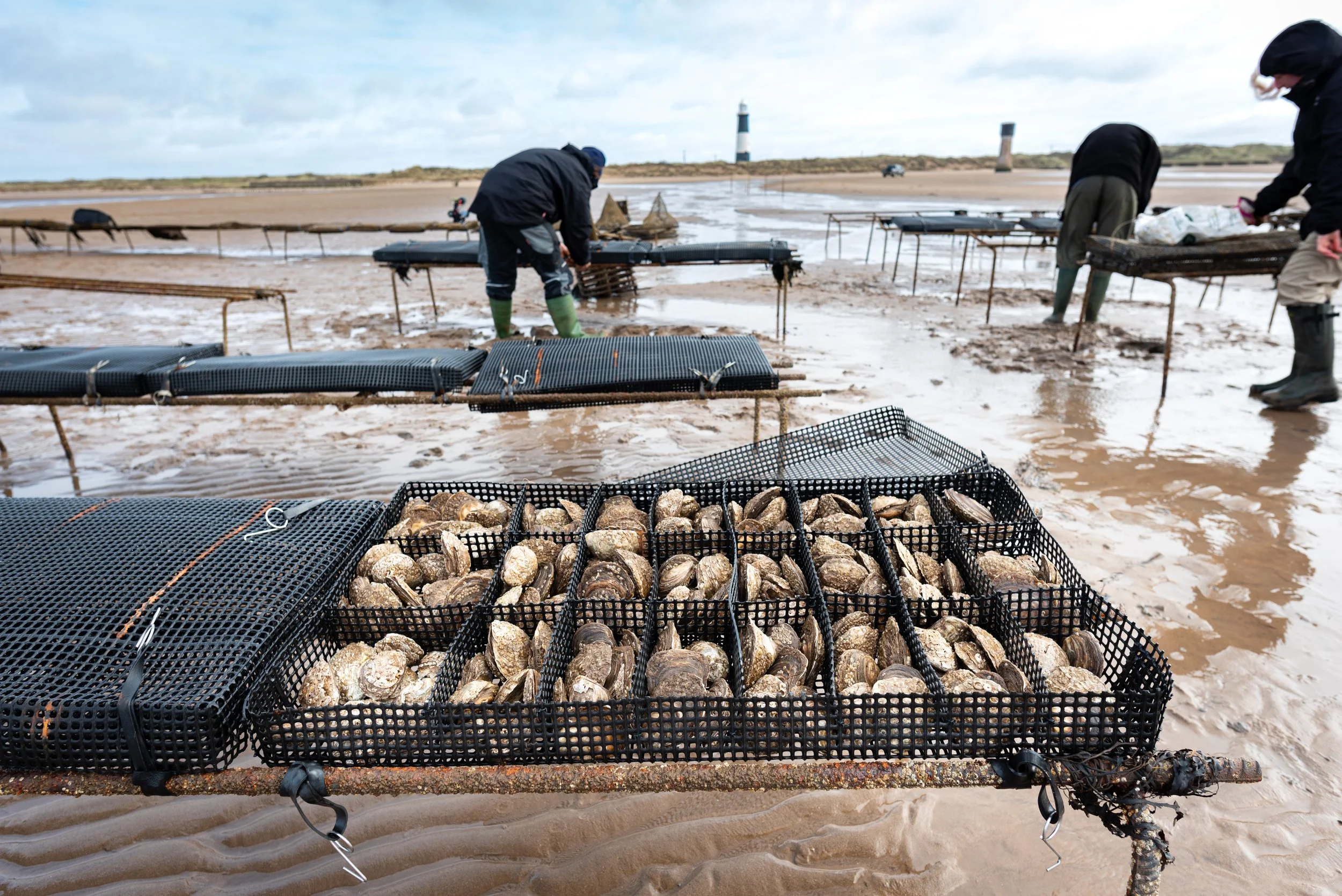Pioneering oyster project breaking new ground
RESTORATION: Working at oyster trestles
By Angus Young
A wildlife project aimed at restoring an oyster reef in the Humber has opened the UK’s first on-site nursery at Spurn Point.
Millions of tiny larvae spawned at an oyster hatchery in Scotland are being bedded on scallop shells packed in two large tanks at the nature reserve which is located on the tip of the estuary.
Once attached to the shells, the larvae are then monitored for an extended period to check on their growth and development before being released into the Humber at specially-protected reef sites.
Until now, similar restoration projects have relied on transporting juvenile and adult oysters long distances from remote hatcheries. The Spurn Point initiative avoids higher transport costs and associated journey stress which often results in low survival rates.
Ultimately, it is hoped to reintroduce 500,000 oysters into the Humber over the next five years.
‘POWERFUL’: Dr Boze Hancock
Beyond that, experts also believe thousands of mini-reefs could be created in the North Sea by developing oyster colonies on rocks being placed on the seabed to provide protection for offshore wind turbines.
The native oyster population in the estuary was farmed as far back as Roman times and once covered over 300 acres of foreshore.
However, over-fishing from the 19th century onwards together with poor water quality and disease decimated the reefs to such an extent that natural recovery became impossible.
The Spurn Point nursery is the result of a collaboration between Wilder Humber - a conservation partnership featuring the Yorkshire and Lincolnshire Wildlife Trusts and energy firm Ørsted - and The Oyster Restoration Company, which operates a hatchery in the north-west of Scotland.
Scallop shells were chosen for the trial because their high calcium content is crucial in supporting the larvae’s early development.
PROJECT: Up to 500,000 oysters could be reintroduced into the Humber
Each larvae arriving at the site is about the size of a grain of sand. However, next door in a laboratory housed in a building which was once the visitor centre and cafe is a six-month-old cluster of juvenile oysters about three inches wide.
Laura Welton, Yorkshire Wildlife Trust’s native oyster restoration officer, said: “Doing it this way is beneficial because it allows the seeded oysters to be produced closer to where they will grow, improving acclimatisation,reducing transportation stress, improving the chances of successful oyster cultivation and reducing costs.
“We hope to see a large number of oyster larvae settled on the scallop shells. If the trial is successful, this method has sustainable potential for creating larger sustainable oyster reefs in the Humber and around the UK.”
The idea of bringing the so-called ‘remote setting’ concept to the UK and Spurn was triggered at an international conference last year when Laura met Dr Boze Hancock, a senior marine habitat restoration scientist at The Nature Conservancy.
Since then, he has worked with the Wilder Humber team on the project.
He said: “While remote setting is only one tool to help the restoration of a critical habitat in the North Sea and surrounding waters, it has proved to be powerful in enabling restoration at scale.”
“From the United States to Hong Kong and Australia, it has really helped restore oyster reefs and it will help the work in the Humber estuary.
“Beyond the Humber, the technique will be essential for integrating oyster integration into the construction of offshore wind in the North Sea.
“The offshore wind industry offers us scientists an extraordinary opportunity to piggy-back on what is already happening out in the North Sea and I am very pleased to see a lot of support from the industry.”
However, rescuing native oyster populations from near collapse is not intended to revive their popularity for human consumption.
REMOTE SETTING: An example of remote set oysters on shell after six months
Instead, the emphasis is firmly on reinvigorating a once key element of a wider marine ecosystem as oysters themselves not only act as powerful water filters by naturally improving clarity and reducing nutrients but their reefs also create essential habitats for other marine species to thrive.
Reefs are also known to act as living breakwaters, protecting coastal communities by reducing wave energy, stabilising sediments and slowing the rate of erosion.
As well as the oyster restoration programme, the Wilder Humber programme at Spurn is also carrying out conservation work on cultivating new seagrass and saltmarsh meadows.
Restoration manager Kieran McClosky explained: “All the work we are dong here, which also includes sand dune modelling, is interrelated.
“Right now, we are taking baby steps to ensure we are doing the right thing for the wider ecosystem and making sure the quality of what we are doing is right.
“If we can show it all works, then it can be scaled up both here and elsewhere around the UK.”





